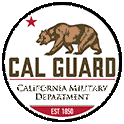129th Rescue Wing trains to save astronauts
Contingency mission is backup for NASA’s Commercial Crew Program
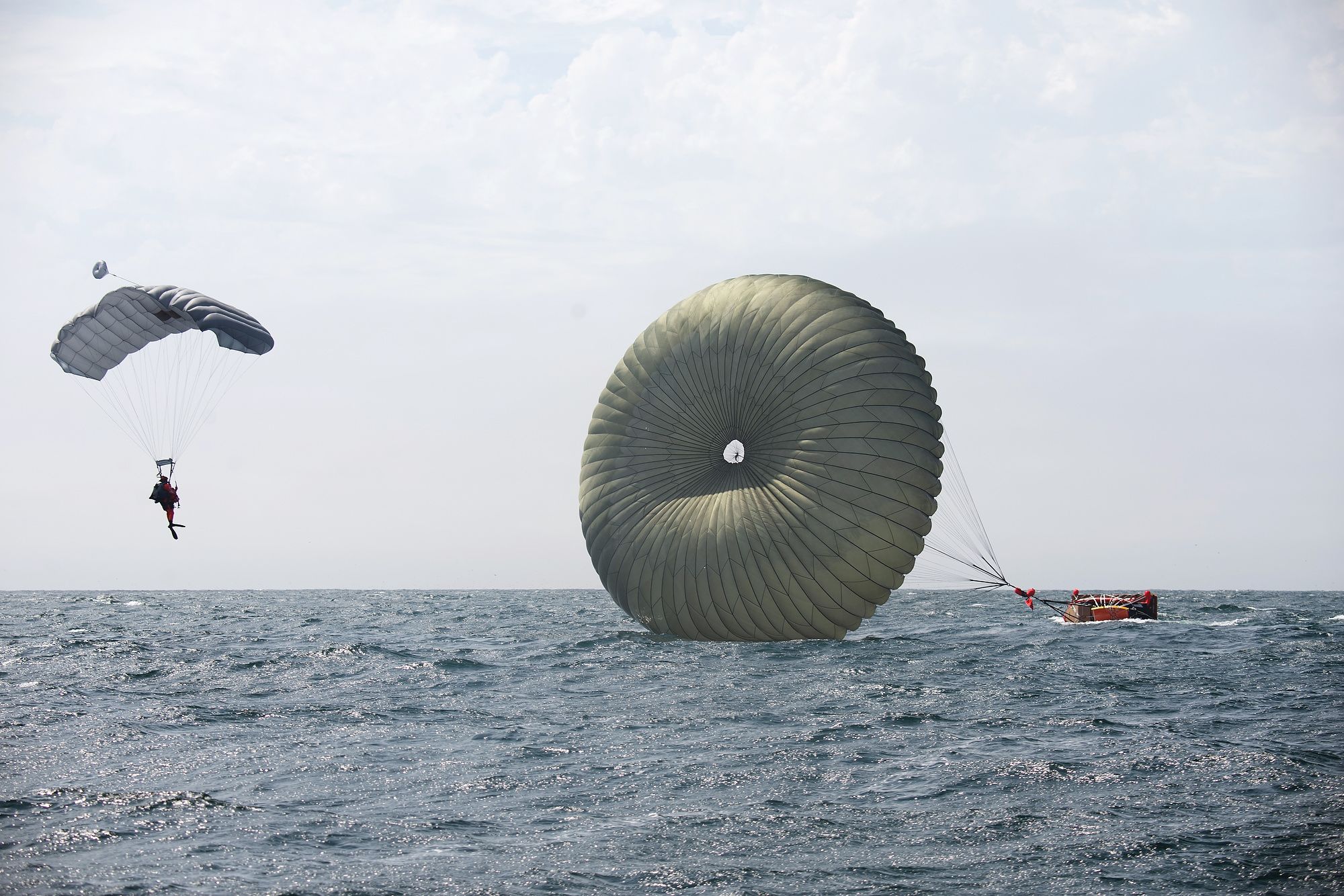
by Staff Sgt. John Linzmeier
154th Wing Public Affairs
Sept. 28, 2021
MOFFETT AIR NATIONAL GUARD BASE, Calif. – Hawaii and California Air National Guard Airmen are enhancing their ability to recover fallen astronauts after completing a search and rescue training scenario held Sept 4-12 out of Moffett Air National Guard Base.
The training is part of an ongoing series of contingency exercises held to ensure that splashed down space travelers will receive aid in the event of an unplanned landing, deep into the Pacific or Atlantic Oceans.
The unique mission set entails the rapid dispatch of a Guardian Angel rescue team and survival equipment delivered by C-17 Globemaster III operators from the 204th Airlift Squadron, based out of Joint Base Pearl Harbor-Hickam, Hawaii.
While primary and secondary scenarios entail the recovery of space capsules from Commercial Crew Providers, the airlift capabilities of the C-17 can deliver aid to sparse destinations of the globe significantly faster than other platforms.
The Globemaster’s application as a rescue platform is a recent adaptation by the DoD and is exclusively operated by Air National Guard units in Hawaii and Alaska to backup NASA’s Commercial Crew Program. Rescue scenarios are tested several times a year to train a growing roster of qualified personnel and develop tactics, techniques and procedures.
Members of the 131st Rescue Squadron, 129th Rescue Wing, California Air National Guard, teamed up with the 204th Airlift Squadron to plan and execute a ‘full mission profile’ for this training iteration, culminating in a sequence of all major recovery steps from start to finish.
“We’ve built a great relationship with the 131st Rescue Squadron, the resident experts in ocean rescue in the Pacific,” said Lt. Col. Brittan Komine, the airlift squadron's director of operations. “They have a lot of experience gained by performing their state mission of contingency ship and open ocean rescues. These pararescuemen are adept at operating in dynamic environments and need to be ready to encounter every situation. On the flip side, our community is accustomed to deliberate planning. Our support to a downed astronaut will be very dynamic, and we were able to exercise that here.”
Participants dedicated a new academic portion to their rescue curriculum, which incorporated several days of briefings, plans and discussion to prepare responders for all foreseeable outcomes which may occur when astronauts are traveling to space and back to earth.
Key personnel from NASA’s Human Space flight contingency programs in Johnson Space Center, Texas, attended to help administer the academics, develop best practices, facilitate the mission profile and report the progress achieved for operations to come.
“When we first started, there was really no training curriculum developed; we had to start from scratch,” said Lt. Col. Tim Saxton, Detachment 3,1st Air Force, NASA Liaison, “so over the past two years we’ve developed a lot of products they can look at to learn about the mission. It’s good to see how it’s progressing; we’ve definitely come a long way to arrive at this point and it’s great to see how the C-17 aircrews are growing as a community.”
The academic process was curated to ensure all attending agencies can operate together as a seamless personnel recovery task force, using overlapping communication systems and understanding what can be expected in the future.
Members became more familiar with all protocols to relay information to and from the capsule, deconflict aircraft within the airspace, establish command of the scene, harmonize with associated air patrols and coordinate rapid departure plans with the designated Guardian Angel pararescue team.
“During our academic lessons, the ‘crawl phase,’ we instructed different actions on the objective so that in execution everyone was properly prepared,” said Komine. “Additionally, we were also able to sit down with the 130th Rescue Squadron, who operate the C-130J, to receive some advice on on-scene-commander operations. The OSC role is a new undertaking for our squadron, but largely important for this mission. You’re basically running the show; talking to the astronaut, managing the other assets and relaying back to ‘C2’ (command and control). It’s exciting to take on that responsibility.”
In addition to streamlining the proficiencies of the rescue crew, personnel from the 154th Logistics Readiness Squadron are also gaining new career field aptitudes in support of the rescue mission.
Air transportation Airmen provide a mission-critical role in rigging and inspecting several tons of rescue equipment onto the aircraft, ensuring that enough medical supplies, sustenance and rescue craft can sustain the lives of drifting astronauts for multiple days while adrift at sea.
While air transportation guardsmen at JBPH-H are traditionally dedicated to supporting fighter operations at their home station, they are now in the process of becoming qualified for routine airdrop taskings.
“I feel that with this new skill set that we are developing, we’re adding more value to our unit and more capabilities which can be applied to this NASA mission and has the potential to be used in all kinds of scenarios,” said Tech. Sgt. Dennis Dedicatoria, the logistics squadron's air transportation noncommissioned officer in charge. “This gives us the means to become self-sustainable, rather than relying on the availability of external agencies every time.”
Airmen from California and Hawaii topped off their week of subject matter expert exchanges with a set of back-to-back full mission profile scenarios, entailing a staged astronaut crew adrift in Santa Cruz Drop Zone, postured to be retrieved by the fully-loaded C-17 package with Guardian Angel members.
The week of training was geared toward validating overall rescue competencies for a national level tasking. Exercise planners made the most out of each flying opportunity to check off annual training requirements for participating members, making for a cost-effective operation.
In alignment with reducing training costs, the Hawaii aircrew used their closer proximity to mainland units to support additional training airdrops with U.S. Navy SEALs and pararescuemen in Southern California several days before the mission.
Since the Commercial Crew Program resumed human space flights on U.S. soil in May 2020, aircrew from 204th Airlift Squadron have stood on alert as astronauts made their way to and from the International Space Station, with plans to continue their role for years to come.
After concluding a week’s worth of irreplaceable training, the Airmen exchanged parting gifts to reaffirm their growing partnership and share elements of their culture. Airmen from Hawaii presented the Guardian Angel team a Leiomano (a shark-toothed club that was used by Hawaiian warriors) inscribed with graphics that represent the two units and words that emphasize their unity as one ‘Ohana (family in the Hawaiian language).
This shared mission with Guardian Angel pararescue jumpers, the pararescue motto proves to encapsulate the entire purpose of their common training – ‘That Others May Live.’
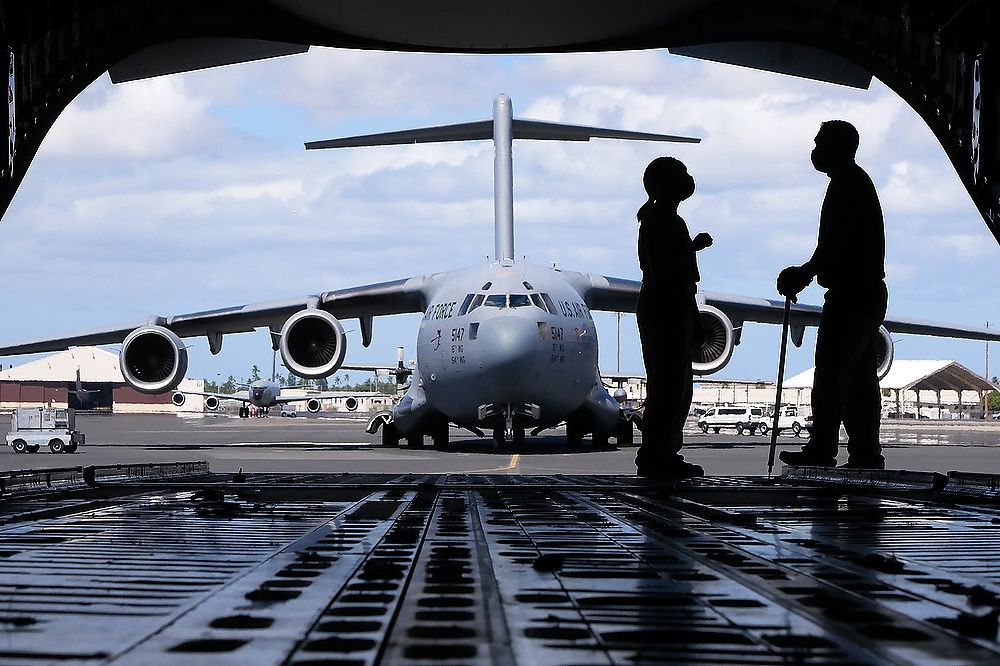
Master Sgt. Joleen Morse and Tech. Sgt. Cory Okimura, 204th Airlift Squadron loadmasters, prepare a C-17 Globemaster III for flight Sept. 4, at Joint Base Pearl Harbor Hickam-Hawaii. A team of aircraft maintenance personnel and aircrew flew to California to conduct astronaut rescue training with partners in Moffett Air National Guard Base. (U.S. Air National Guard photo by Staff Sgt. John Linzmeier)
Master Sgt. Joleen Morse and Tech. Sgt. Cory Okimura, 204th Airlift Squadron loadmasters, prepare a C-17 Globemaster III for flight Sept. 4, at Joint Base Pearl Harbor Hickam-Hawaii. A team of aircraft maintenance personnel and aircrew flew to California to conduct astronaut rescue training with partners in Moffett Air National Guard Base. (U.S. Air National Guard photo by Staff Sgt. John Linzmeier)
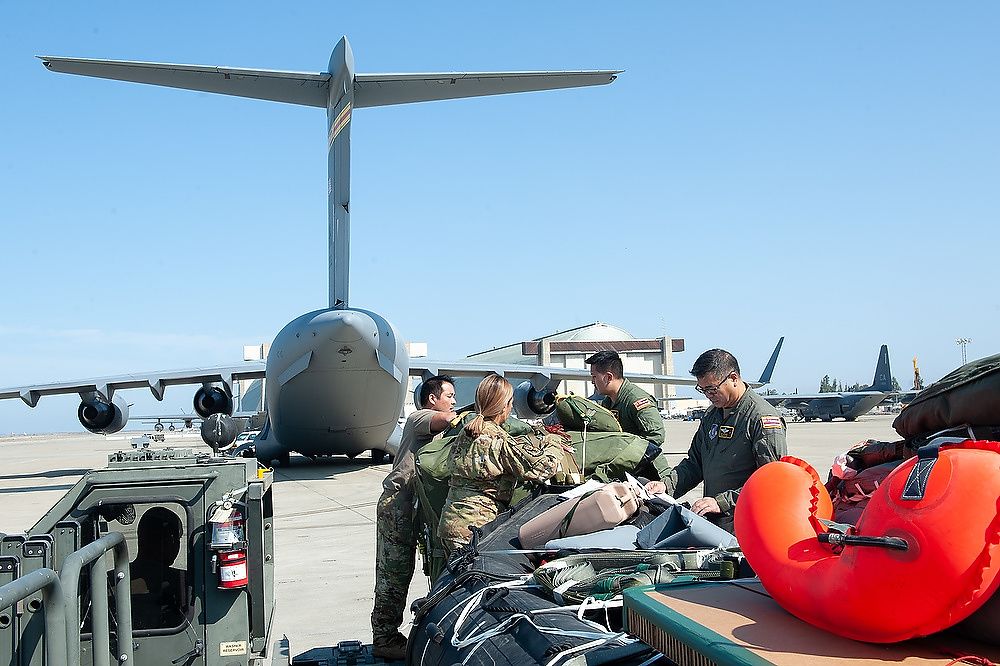
Loadmasters from the 204th Airlift Squadron prepare to load rescue craft onto a C-17 Globemaster III, Sept. 8, at Moffett Air National Guard Base, Calif. (U.S. Air National Guard photo by Staff Sgt. John Linzmeier)
Loadmasters from the 204th Airlift Squadron prepare to load rescue craft onto a C-17 Globemaster III, Sept. 8, at Moffett Air National Guard Base, Calif. (U.S. Air National Guard photo by Staff Sgt. John Linzmeier)
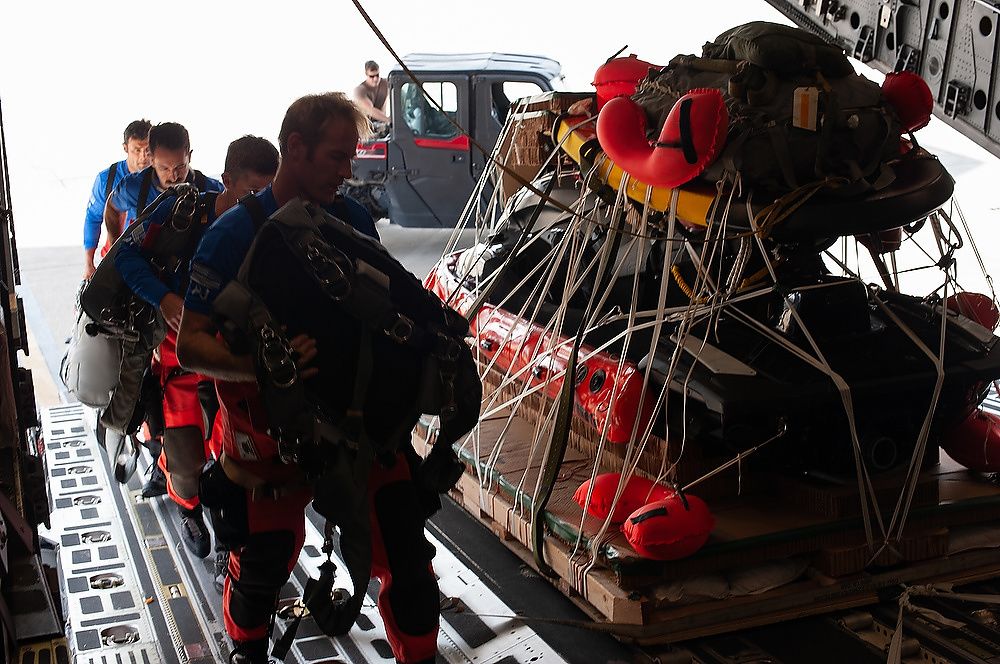
Guardian Angel pararescue jumpers from the 131st Rescue Squadron, 129th Rescue Wing, board a C-17 Globemaster III Sept. 9, at Moffett Air National Guard Base. (U.S. Air National Guard photo by Staff Sgt. John Linzmeier)
Guardian Angel pararescue jumpers from the 131st Rescue Squadron, 129th Rescue Wing, board a C-17 Globemaster III Sept. 9, at Moffett Air National Guard Base. (U.S. Air National Guard photo by Staff Sgt. John Linzmeier)

Guardian Angel pararescue jumpers from the 131st Rescue Squadron don parachutes and rescue gear on a C-17 Globemaster III Sept. 9, at Moffett Air National Guard Base. (U.S. Air National Guard photo by Staff Sgt. John Linzmeier)
Guardian Angel pararescue jumpers from the 131st Rescue Squadron don parachutes and rescue gear on a C-17 Globemaster III Sept. 9, at Moffett Air National Guard Base. (U.S. Air National Guard photo by Staff Sgt. John Linzmeier)
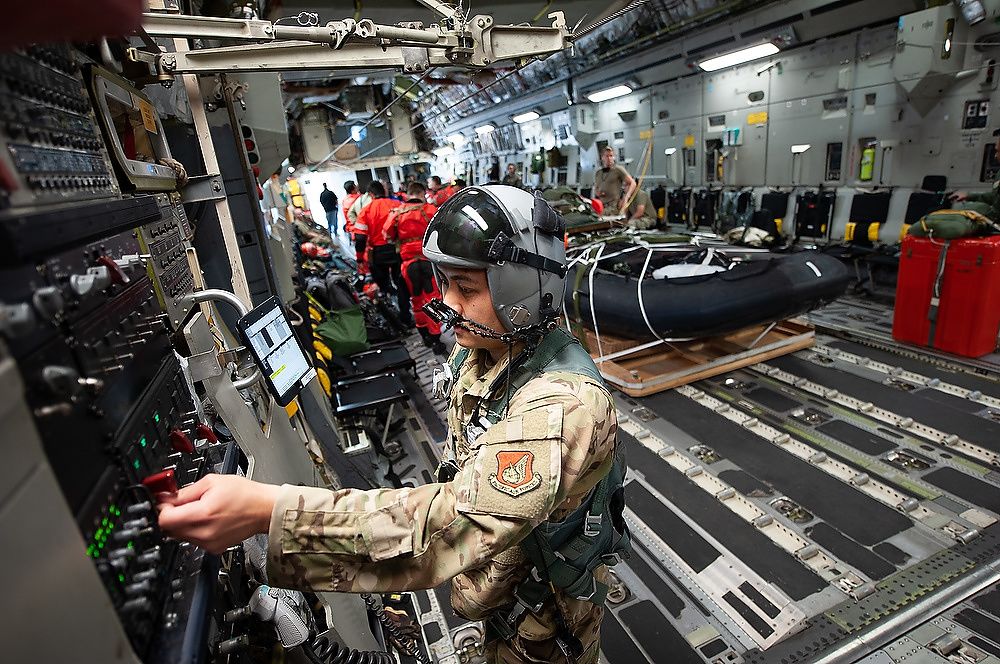
Tech. Sgt. Brandon Ducosin, a 204th Airlift Squadron loadmaster, accesses C-17 Globemaster III controls Sept. 9, at Moffett Air National Guard Base. (U.S. Air National Guard photo by Staff Sgt. John Linzmeier)
Tech. Sgt. Brandon Ducosin, a 204th Airlift Squadron loadmaster, accesses C-17 Globemaster III controls Sept. 9, at Moffett Air National Guard Base. (U.S. Air National Guard photo by Staff Sgt. John Linzmeier)
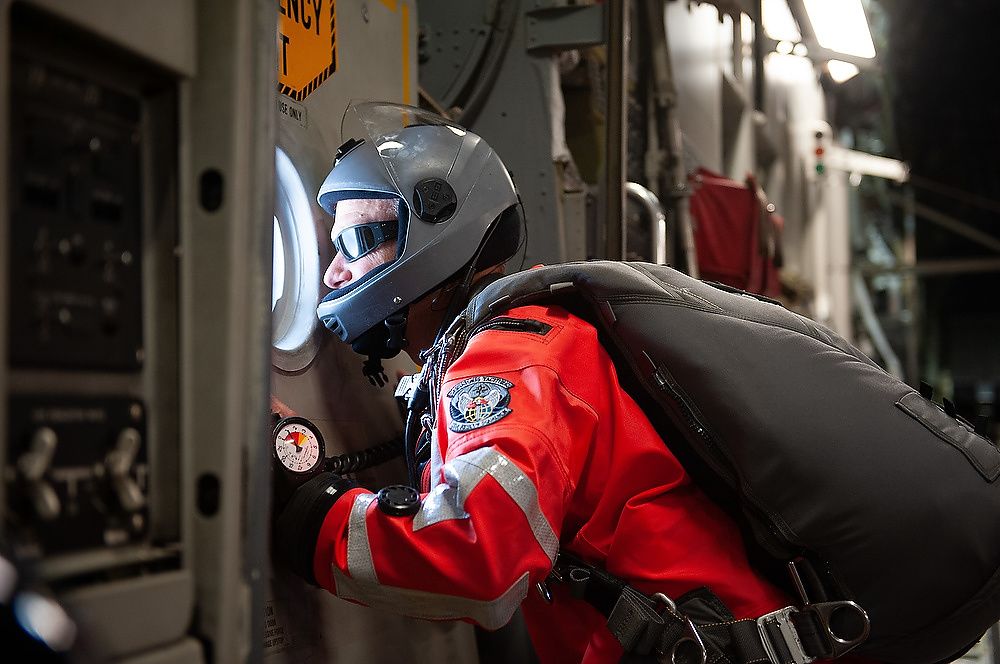
A Guardian Angel pararescue jumper from the 131st Rescue Squadron looks out the window of a C-17 Globemaster III Sept. 9, near Santa Cruz Drop Zone off the coast of California. (U.S. Air National Guard photo by Staff Sgt. John Linzmeier)
A Guardian Angel pararescue jumper from the 131st Rescue Squadron looks out the window of a C-17 Globemaster III Sept. 9, near Santa Cruz Drop Zone off the coast of California. (U.S. Air National Guard photo by Staff Sgt. John Linzmeier)
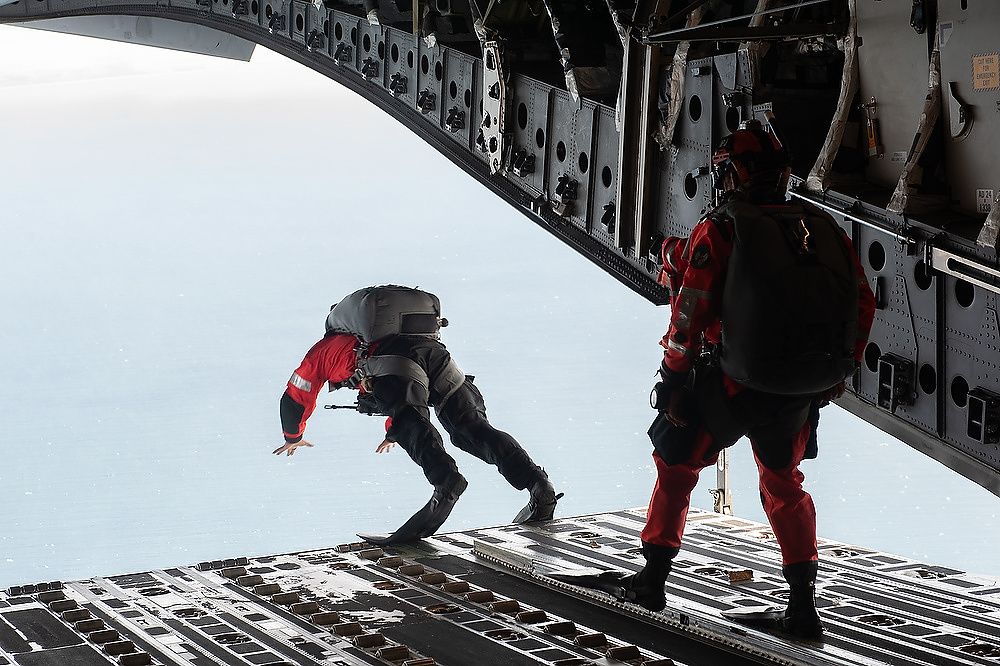
Guardian Angel Pararescue jumpers from the 131st Rescue Squadron skydives over Santa Cruz Drop Zone off the coast of Califfornia. (U.S. Air National Guard photo by Staff Sgt. John Linzmeier)
Guardian Angel Pararescue jumpers from the 131st Rescue Squadron skydives over Santa Cruz Drop Zone off the coast of Califfornia. (U.S. Air National Guard photo by Staff Sgt. John Linzmeier)

A U.S. Air Force C-17 Globemaster III operated by the 204th Airlift Squadron provides aerial drop of equipment and rescue personnel off the coast of Santa Cruz, Sept. 9. (U.S. Air National Guard photo by Senior Airman Duane Ramos)
A U.S. Air Force C-17 Globemaster III operated by the 204th Airlift Squadron provides aerial drop of equipment and rescue personnel off the coast of Santa Cruz, Sept. 9. (U.S. Air National Guard photo by Senior Airman Duane Ramos)
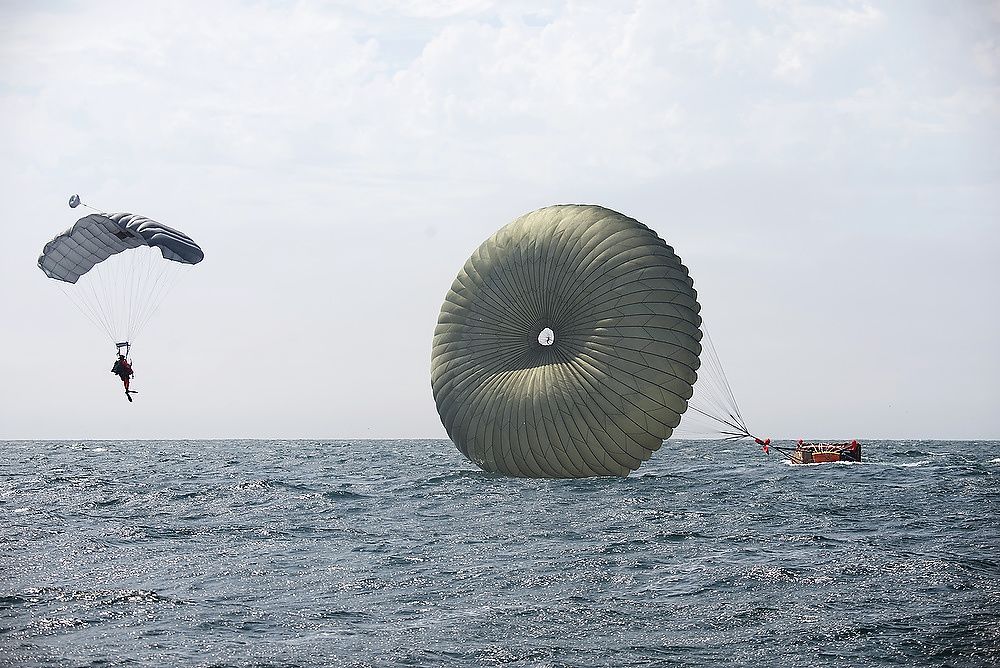
A U.S. Air Force pararescueman assigned with the 131st Rescue Squadron prepares to land near a jet ski delivered by a C-17 Globemaster III, operated by the 204th Airlift Squadron off the coast of Santa Cruz, Sept. 9. (U.S. Air National Guard photo by Senior Airman Duane Ramos)
A U.S. Air Force pararescueman assigned with the 131st Rescue Squadron prepares to land near a jet ski delivered by a C-17 Globemaster III, operated by the 204th Airlift Squadron off the coast of Santa Cruz, Sept. 9. (U.S. Air National Guard photo by Senior Airman Duane Ramos)
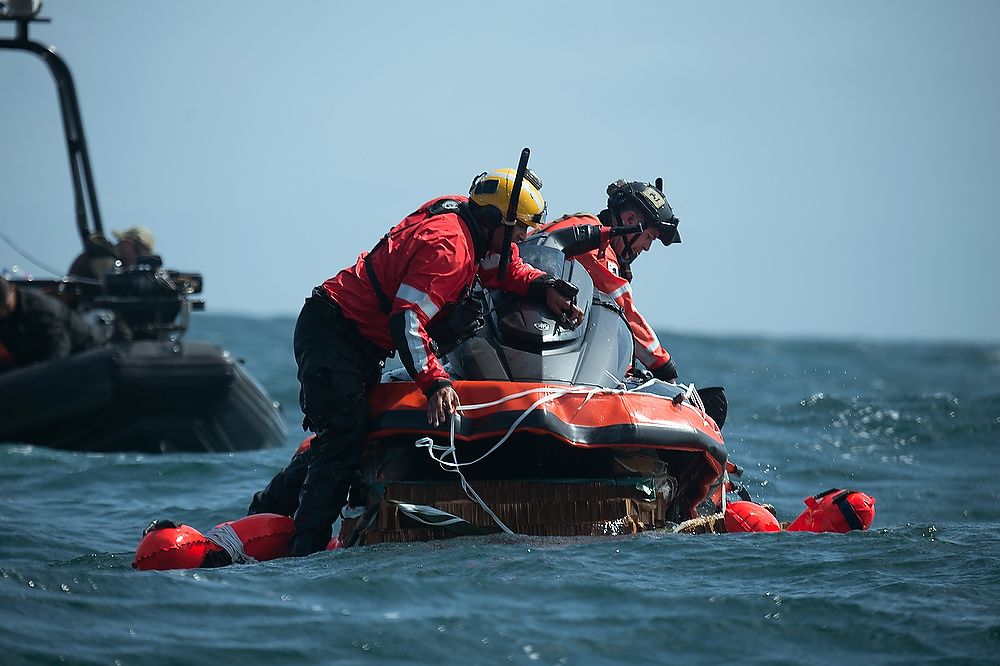
U.S. Air Force pararescuemen assigned with the 131st Rescue Squadron prepares to release a jet ski delivered by a C-17 Globemaster III, operated by the 204th Airlift Squadron off the coast of Santa Cruz, Sept. 9. (U.S. Air National Guard photo by Senior Airman Duane Ramos)
U.S. Air Force pararescuemen assigned with the 131st Rescue Squadron prepares to release a jet ski delivered by a C-17 Globemaster III, operated by the 204th Airlift Squadron off the coast of Santa Cruz, Sept. 9. (U.S. Air National Guard photo by Senior Airman Duane Ramos)

